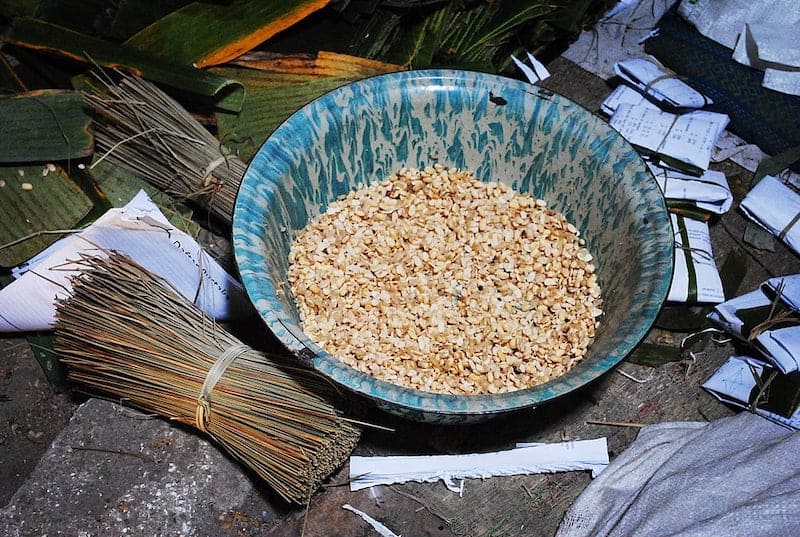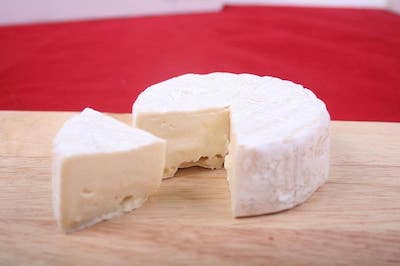What Is Tempeh Starter? (Solved!)
Tempeh is a high-protein, soy-based fermented food that is a delicious and popular alternative to meat.
Like all fermented foods, making tempeh is a process that begins with a “starter”. What is tempeh starter, you ask? It’s the microorganisms that you need for tempeh to ferment and effectively make tempeh.
But can you use just any starter? Can you make it yourself, or do you need to buy it?
Let’s learn what tempeh starter really is and how you can get some to make your own tempeh.
What Is the Starter Culture for Tempeh?
Many fermented foods are started by wild yeasts and beneficial bacteria that occur naturally in our environment.
However, tempeh is fermented by a fungus, and not just any fungus. Tempeh is fermented by the Rhizopus oligosporus fungus.
Rhizopus oligosporus is actually a very special fungus. It is ideally suited to thrive in the warm climates of Indonesia, where tempeh originated.
It’s a highly effective metabolizer of the nutrients in soybeans and it is robust enough to outcompete other potentially harmful bacteria, keeping the tempeh safe to eat.
During fermentation, Rhizopus oliogsporus produces fluffy mycelia that bind the soybeans together to form the firm cake we recognize as tempeh.
It can also be used to ferment grains and legumes other than soy, and is a starter for Sudanese black oncom.
Finally, the history of Rhizopus oligosporus is incredibly important. It’s a domesticated form of Rhizopus microsporus, a wild fungus which can be toxic to humans.
Indonesians have been cultivating Rhizopus oligosporus for centuries and it is not found in nature.
Tempeh is also sometimes made with the relative Rhizopus oryzae, which is a more common wild fungus, not so specific to Indonesia.
Why Does Tempeh Need Starter Culture?
Almost all fermented foods require a starter culture. To explain why, let’s quickly recap how fermentation and food preservation works.
Virtually all foods, from the moment they ripen, begin to decay.
Moisture is essential to the decaying process, so if you want to preserve foods, you might dry them by salting them, curing them, or dehydrating them.
When foods are moist, they are exposed to the three factors that hasten decay:
- Enzymes. Enzymes break down foods in the presence of moisture, oxygen, and heat. The rotting caused by enzymes can be slowed by reducing temperatures, oxygen, or moisture.
- Mold. Tiny mold spores are everywhere and occur naturally in the air. In the presence of moisture and oxygen, mold can begin to grow and break down food.
- Bacteria. Unlike enzymes and mold, most harmful bacteria do not require oxygen to live and can thrive without air. This is why canned foods can sometimes be harmful even when unopened.
Food that is exposed to air for even a few moments will already begin the process of decay, as mold, bacteria, and enzymes begin to break it down. To stop that process, you can ferment food.
Fermenting means deliberately adding “good” bacteria or spores to food, and creating an environment where they can thrive.
When you add a good fungus or bacteria to foods, and it begins to live and grow, it creates an environment where no other organisms can live, eliminating “bad” bacteria and preventing the development of enzymes and mold.
This is why it is important that Rhizopus oligosporus can “outcompete” other organisms when making tempeh.
For some fermented foods (like sourdough bread or apple cider), you can simply use naturally occurring bacteria and don’t need to add a special starter.
However, for tempeh, kombucha, yogurt, and some other fermented foods, you need to use a starter that has the specific bacteria you need to ferment that food.
How Is Tempeh Starter Used to Make Tempeh?
To make tempeh, you cook and de-hull soybeans. Then you stir the cooled beans with vinegar to create an acidic environment, and sprinkle them with your tempeh starter.
Place the soybeans in a ventilated container and place the container inside an incubator. The beans need to be kept at 85-90°F for up to 48 hours, so the mycelium can grow and form the tempeh cake.
You should look at the tempeh every 12 hours or so to ensure that it is progressing correctly and not rotting.
After the tempeh is made, you can transfer it to a refrigerator to slow the fermentation process and preserve the tempeh for longer.
How Do I Get Tempeh Starter?
You can buy tempeh starter from a wide range of shops or make your own from any finished tempeh you already have.
Where to Buy Tempeh Starter
You can order tempeh starter online or buy it at a wide range of Asian grocery or vegan-friendly stores.
Depending on where you live, there may also be specialty stores devoted to fermentation and they will also have tempeh starter.
Here are some great tempeh starter culture options on Amazon you can buy:
- Cultures for Health Tempeh Starter Culture
- Cultures for Health Soy-free Tempeh Starter Culture
- Ragi Tempeh Starter
How to Make Tempeh Starter
Finished tempeh has living Rhizopus oligosporus spores on it already, so you can harvest it to make your own tempeh from scratch.
To make your own tempeh starter, follow my steps below.
Step 1.
Take a piece of finished tempeh (homemade or store-bought).
Step 2.
Place the tempeh in a container where it will have air circulation and will not dry out.
Placing it in a bowl, covering the bowl with cling film, and then poking holes all over the cling film is a good option.
You may also place it in a sealed plastic bag and poke holes in the bag.
Step 3.
Place the container of tempeh in an incubator. The tempeh needs to remain at a steady 85-90°F in order for the spores to grow.
Use an accurate thermometer to monitor the temperature.
You may place it in an oven with the light on and the door open for air circulation, a cupboard with a heating pad, or a commercial food dehydrator or incubator with a thermostat.
Step 4.
Check the tempeh every few hours. If it’s your first time, check the temperature every few hours to ensure it is in the right range.
Over the next 24-48 hours, you should see:
- The tempeh start to look fuzzy
- The tempeh develop white fluff
- The tempeh develop grey fluff
- The grey fluff develop black spots or patches
The black spots mean that the fungus has started to reproduce, which is the next necessary step.
If your tempeh instead starts to look wet or gelatinous, or smell bad, discard the piece of tempeh and start over.
Step 5.
Remove the piece of tempeh with black spots from the incubator, and cut it into small slices or chunks.
Step 6.
Place the chunks on dish and allow them to air dry for 48 hours.
Step 7.
Measure the weight of your tempeh chunks and then measure out double that amount of rice flour.
Step 8.
Blend or process the tempeh pieces and the rice flour together. This is your tempeh starter.
Step 9.
In Summary
Because tempeh is fermented with a very specific type of fungus, it requires a starter in order to ferment properly.
However, you can grow and harvest this fungus yourself from finished tempeh and make your own tempeh starter as often as you like.







